How a fanless fan is arranged: the device and the principle of operation of the device
One of the novelties of the market for HVAC equipment is a bladeless fan. The device at the same time causes interest and doubt among potential buyers. The unusual fanless fan surprises with its appearance and functionality.
Someone decides to purchase it, while someone worries that the money will be wasted. In order to dispel doubts about the operability of the equipment, you need to get acquainted with its device, the principle of operation and operation features.
The content of the article:
A few words about creating a fanless fan
Model radically different in appearance from others types of fans, familiar to many since childhood, was invented in 2009. Its creator is James Dyson.
For about 30 years he worked on options for improving the vacuum cleaner and other household and industrial equipment. This English developer came up with many interesting and useful inventions, patents for which were sold in different countries of the world.

All of his developments are distinguished by an exquisite design and improved functionality. Mr. Dyson, working on improving hygienic hand drying, took as a basis the principle of her work for his new invention. So, in 2009 there was a special fan that does not have blades.
About 4 years, the leading engineers of the company J. Dyson spent on modeling a fan ring, which can most effectively pass air through itself, multiplying it many times.
The bladeless device from Dyson already in 2010 was sold in the homeland of the inventor for 199 British pounds.It is difficult to call such a price popular, but there were many people who wanted to get an innovative fan.
Therefore, now on the market you can find similar equipment from various manufacturers, including budget Chinese models.
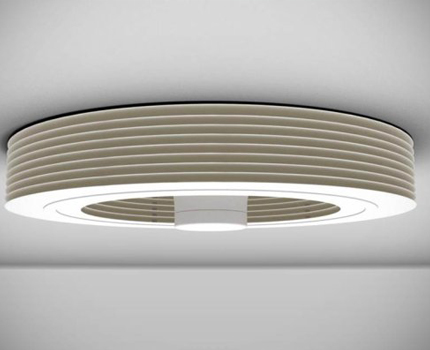
The device and operation of the bladeless device
A fan without blades is often called in honor of its creator the Dyson fan or, as he called the device, the Air Multiplier. This original invention is in demand due to the ability to create a uniform flow of air and fit perfectly into any interior.
The multiplier looks stylish, and the presence on the market of analogues makes it accessible to a wide range of consumers.
Structural components of the air multiplier
The Dyson air multiplier is able to repeatedly increase the air flow at the outlet. Moreover, engineers, designers and technologists of the company create more advanced models that can not only blow objects, furniture and people indoors, but also perform functions on cleaning and humidifying the air.
However, the price of such new products exceeds $ 300.
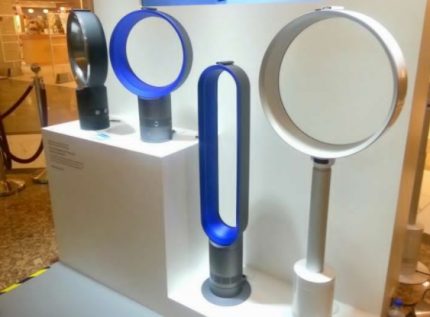
Depending on the model, the device itself will also differ. After all, the more functions it can perform, the more buttons will be on the control panel.
A fan without blades consists of the following parts:
- housing;
- Control Panel;
- blower.
In the case there is an engine responsible for the operation of the device. Also on this part there are special holes through which air will be drawn in when the multiplier is turned on.
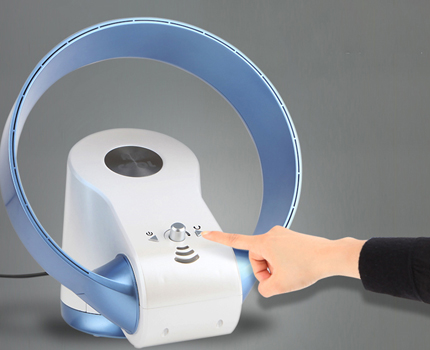
The fan can be controlled mechanically or electronically using the panel. In most cases, remote control is provided. Many models from various manufacturers are equipped with a remote control that works, on average, at a distance of 3 meters.
The control panel provides:
- on and off button;
- rheostat to adjust the speed of work;
- other buttons depending on the model of the multiplier and the functions provided by the manufacturer.
The blower has a round or oval shape. Its size depends entirely on the product model. This part of the fan can have a clear geometric shape or be in the shape of a heart, apple, etc.

The air multipliers according to the installation method can be divided into 3 types:
- floor;
- tabletop;
- wall mounted.
The first 2 types belong to portable devices, and the last to stationary ones.Often, manufacturers provide for one model 2 options: wall mount and tabletop installation. In this case, the fan must be equipped with brackets with dowels.

Dyson Fan: How It Works
Vaneless fans are able to pass through themselves up to 500 liters of air in 1 second. The output stream is evenly distributed, gently enveloping the entire space. During a visual inspection, moving parts outside the operating device are not observed. This is how, at first glance, the air multiplier looks like.
The principle of such effective operation of the fanless fan is the multiple multiplication of the drawn-in air at the outlet. This is due to the special shape of the blower and the presence of a hollow channel of a special shape inside it.

First, a high-speed engine draws air through small openings at the base of the appliance. Then this air moves into the channel of the blower. The shape of the channel is designed according to the same principle as the wing of an aircraft. Therefore, when air moves inside the channel, its speed increases.
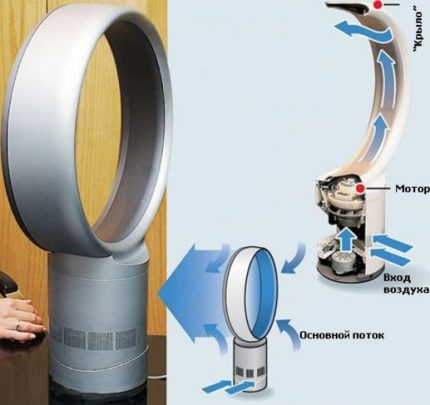
Air leaves the channel from the narrower side, and a low pressure region forms on the reverse side. This ensures that air is actively drawn inward, the volume of which is 15-20 times higher than the original, drawn in by the engine.
As a result, people who are in the range of the device blows much harder than when using a conventional blade fan.
Features of using the multiplier
The scope of use of a fan without blades is very wide - it is a house, office, cottage, kindergarten, hospital or other municipal institution. The exception is bathrooms, rooms with a pool, saunas, baths. It is important there to ensure effective removal of wet vapors.
The fact is that the device is safe if it is used by capable members of society. Otherwise, use is permitted under the supervision of adult citizens.

In addition to the soft distribution of the greatly increased air flow, a fan without blades can humidify the air and cool / warm. The percentage of humidity the user sets in the settings. The adjustment range depends on the model of the device and ranges, on average, from 30 to 70%.
As for the heating or cooling function, it is available in more expensive models. Desired parameters are specified by the user. You can also choose a model that can clean the air of harmful impurities, for example, from smoke or child.
The market for HVAC equipment is replete with offers of various models of fanless fans from many manufacturers. Among them are both affordable models costing up to $ 100, and expensive versions of well-known brands with the functions of this air conditioner or split system.
Among the manufacturers offering their bladeless equipment, the following companies can be noted: Flextron, SUPRA (Supra), UNISVET, Clever and clean, Roward, Dyson, Coolguy, Aaron, RENOVA, Orion, Bladeless, Blux, MAGNIT.
The price range of the bladeless devices of these companies is from 2,000 to 35,000 rubles or more.
An important characteristic that affects the comfort level when using a fan is the noise level.It can be 40 dB, 55 dB, 60 dB or more. This is the most important parameter that should be taken into account before buying.
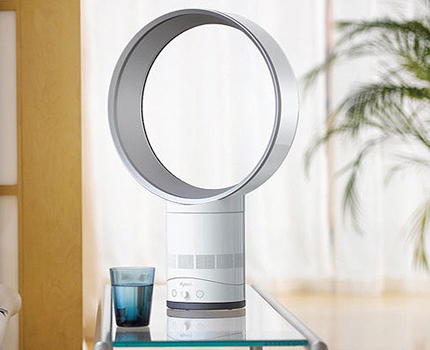
The noise level of a specific model manufacturers indicate in the technical specifications. Moreover, this is the maximum level that is achieved when the equipment is operating at maximum speed. For cheap appliances, the declared noise level may not correspond to reality.
Pros and cons of bladeless fans
The air multiplier has its advantages and disadvantages identified by users.
Among the positive aspects include:
- safety;
- uniform air flow;
- minimum electricity consumption;
- convenient management;
- ease of care;
- stylish design.
Safety is ensured by the absence of blades and other moving parts outside the product. Also, thanks to the motor located below, and the absence of vibration from the rotation of the blades, the whole structure turned out to be stable.

Electricity consumption is usually 25 watts and 40 watts. Models with other characteristics are less common.
The control of the device is simple and clear. All the details of adjusting the purchased model are described in detail in the instructions. The airflow power of the fanless fan is also adjustable.
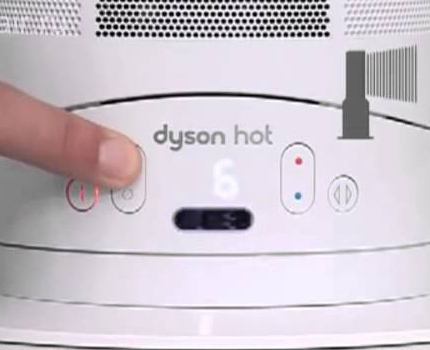
In addition to the advantages, a bladeless device has its drawbacks:
- Noise effect - sound level from 40 dB. The larger and more powerful the device, the louder it will buzz at maximum speed.
- High price. The equipment loses according to this indicator to the usual paddle fans.
- Fragility. This disadvantage is characteristic of inexpensive analogues made in China.
Manufacturers strive to take into account all the shortcomings and wishes of customers, improving new fan variations. So, first, consumers were offered various colors and sizes, then the most intricate form. Later it was the turn to minimize the noise level produced by the device.
The next task was to reduce energy consumption and add additional functions for humidification and heating / cooling of air passing through a fanless fan.
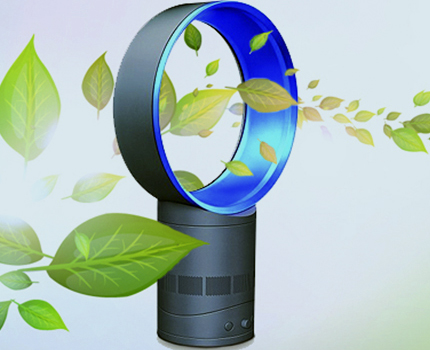
DIY bladeless appliance
The question of creating a do-it-yourself fan without blades was visited by many craftsmen. During the experiments, home craftsmen received a lot of working homemade products.
Option # 1: a product from plastic buckets
For the manufacture of the device using plastic containers, a simple fan and a glue gun.
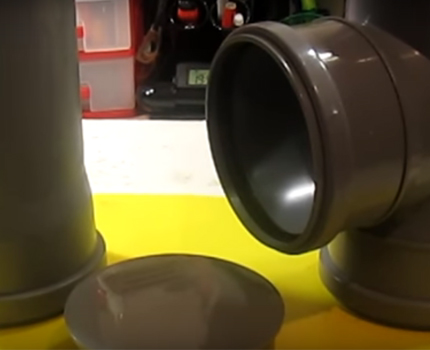
For example, you can take:
- 2 plastic buckets of 5 and 10 liters;
- PVC pipe 110;
- distribution tee;
- stub.
First you need to cut a piece of 15 cm long from the pipe. Then, in a 10-liter bucket, make a hole on the side of exactly the same size as the outer diameter of the pipe.
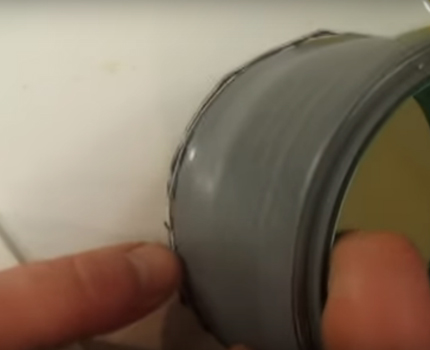
The next step is to take a 5 liter bucket and cut 3 cm from the top edge. It remains to cut a hole in the bottom, the diameter of which is 2 cm less than the very bottom of the bucket. In the bottom of a larger bucket, you also need to make a hole of the same size and connect them together with a glue gun. This is a homemade blower.
Now it is necessary to assemble the casing with the engine, the role of which will be performed by the axial fan. To do this, put a cap on the side of the tee, having previously applied an adhesive layer there.
It is better to leave a small gap of 1.5-2 cm so that there is air access. Then you need to put the PVC pipe on one of the nozzles of the tee and mark the border - this will be a segment of about 10 cm, which will be cut off.
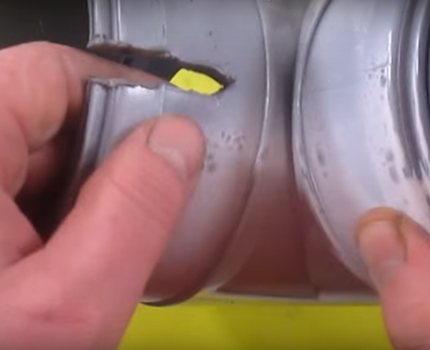
It is here that an axial electric fan of the desired diameter is to be installed, and a wire is inserted into the hole for inclusion in the electrical network.
To give the finished homemade aesthetic appearance, all details can be painted in the same color with aerosol enamel. For example, in white, beige or blue. The housing is ready to connect to the network.
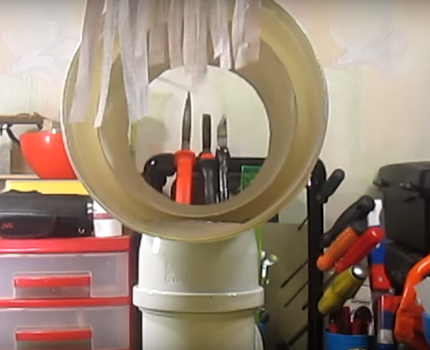
If you put a container with ice inside the case, then the homemade product will act as an air conditioner. And when placing a piece of cotton with 5-7 drops of essential oil, you can fill the whole room with a pleasant aroma.
Option # 2: plastic pipe fan
The prototype of the second option was a brandless blade brand Dyson. The case and the technical part are assembled by a home craftsman according to the finished product scheme of a factory production.
We’ll start the construction of homemade work that is useful in everyday life from the building:
The case is ready, now it should be equipped with technical stuffing:
The assembly of the device is almost complete. It remains only to cut and glue the bottom to the base of the rack. And it’s better to glue four round flat legs cut from a piece of rubber 4-5 mm thick to the bottom.
Original ideas for creating a household fan are presented in this article.
Care and maintenance
A fan without blades is able to serve the period declared by the manufacturer in the instructions only subject to the rules for its operation. It is easy to use and care. It is important to use the device for its intended purpose and not to transfer it from place to place during operation.
If you need to rearrange the equipment, then you should take it by the housing, and not by the blower.
To service the air multiplier, it is sufficient to periodically perform the following actions:
- brush blower holes to prevent clogging;
- wipe the blower and the appliance body with a damp rag, removing dust and other impurities.
Maintenance should be carried out as needed. The use of special cleaners or detergents is not required - the surface of the bladeless fans is well cleaned with a damp or dry soft cloth.

If a malfunction was found, then you should contact the specialists authorized to repair the climatic equipment of a particular manufacturer.
Attempting to repair the malfunction yourself may void the fan warranty. In the absence of experience in the repair of such devices, even more damage can be caused to the equipment.
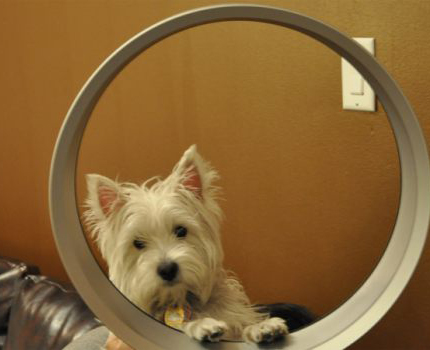
Conclusions and useful video on the topic
About the device and the principle of operation of an improved model of a fanless fan from Dyson in a video review:
The advantages of bladeless fans are discussed in the video clip:
You can watch how to assemble a fan without blades from improvised materials in the following video:
A fan without blades can be made from scratch, having spent a minimum of effort and materials on it. Step-by-step assembly instructions in the video clip:
Having considered the features of the device and the operation of the fanless fan, having familiarized yourself with the model range of various manufacturers, you can make up your mind about the device. Products from well-known companies are not cheap, but they are quite capable of replacing air conditioning.
Cheaper analogues loudly make noise, creak and may not give the performance indicated in the instructions.
Do you have experience using a bladeless fan? Or maybe you managed to assemble the unit yourself? Please share information with our readers. Leave comments and ask questions on the topic in the form below.

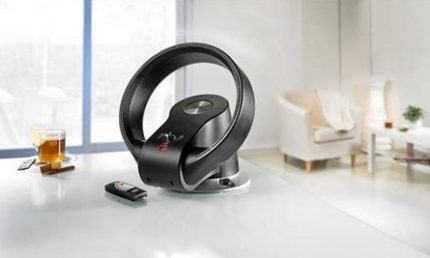
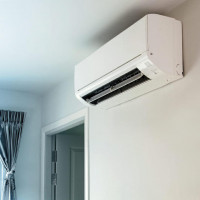 What is a split system: device and principle of operation of typical air conditioning systems
What is a split system: device and principle of operation of typical air conditioning systems  How does a humidifier work: device, principle of operation and types of devices
How does a humidifier work: device, principle of operation and types of devices  What is fan coil: principle of operation and installation rules for a fan coil
What is fan coil: principle of operation and installation rules for a fan coil  What is a multi split system: principle of operation + installation and connection rules
What is a multi split system: principle of operation + installation and connection rules  Chiller-fan coil system: operating principle and arrangement of the thermoregulation system
Chiller-fan coil system: operating principle and arrangement of the thermoregulation system  Why do you need a humidifier at home: the functions and purpose of the device for humidification
Why do you need a humidifier at home: the functions and purpose of the device for humidification  How much does it cost to connect gas to a private house: the price of organizing gas supply
How much does it cost to connect gas to a private house: the price of organizing gas supply  The best washing machines with dryer: model rating and customer tips
The best washing machines with dryer: model rating and customer tips  What is the color temperature of light and the nuances of choosing the temperature of the lamps to suit your needs
What is the color temperature of light and the nuances of choosing the temperature of the lamps to suit your needs  Replacement of a geyser in an apartment: replacement paperwork + basic norms and requirements
Replacement of a geyser in an apartment: replacement paperwork + basic norms and requirements
So far, it has not been possible to meet such a fan with his acquaintances and friends, apparently, its high cost affects. It is hardly worth buying Chinese fakes, because they will not last for a long time, and the effect of their use will not be what you expect from quality products. I would like to note that such a fan will be useful for families with small children, otherwise they will put their fingers everywhere.
Not everything made in China is of poor quality. Do not forget that China is now a world assembly shop, where many world brands assemble their equipment. Yes, with the current US policy, perhaps this will change soon, but so far we have what we have.
Well, if you do not like the Chinese at all, then look at the domestic manufacturer - Kitfort. Or on the market leaders - Dyson, but their price bites.
We bought it rather as a nice accessory for decoration, but it turned out to be very popular. If you have a small child and curious pets, a bladeless fan in the summer is ideal! It is, of course, not cheap, but much more affordable than installing an air conditioner. In addition, it practically does not require maintenance, only it is necessary to wipe it periodically with a rag. If you like unusual home gadgets, take it easy!